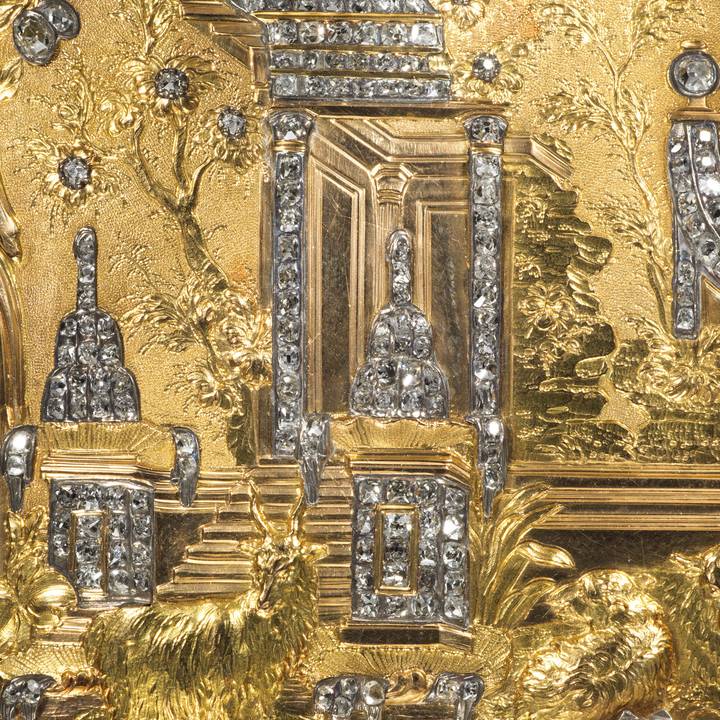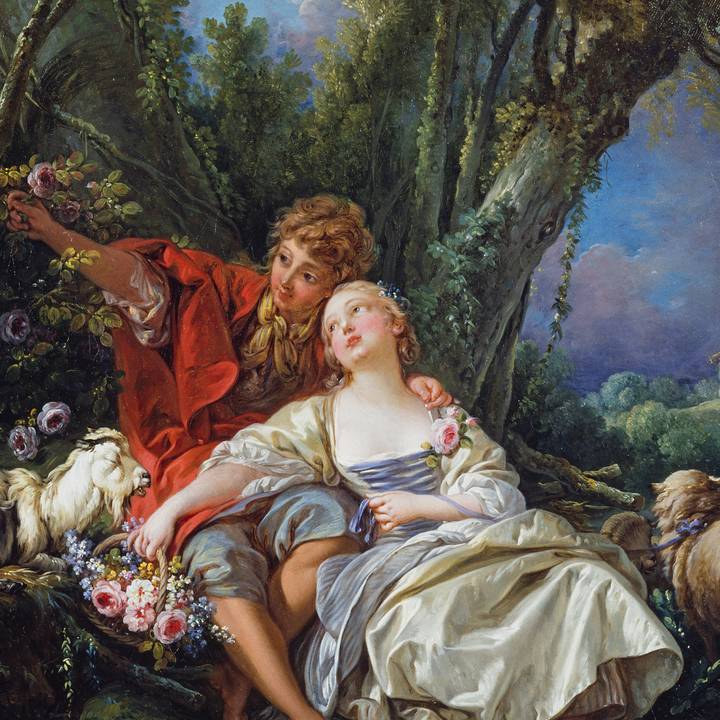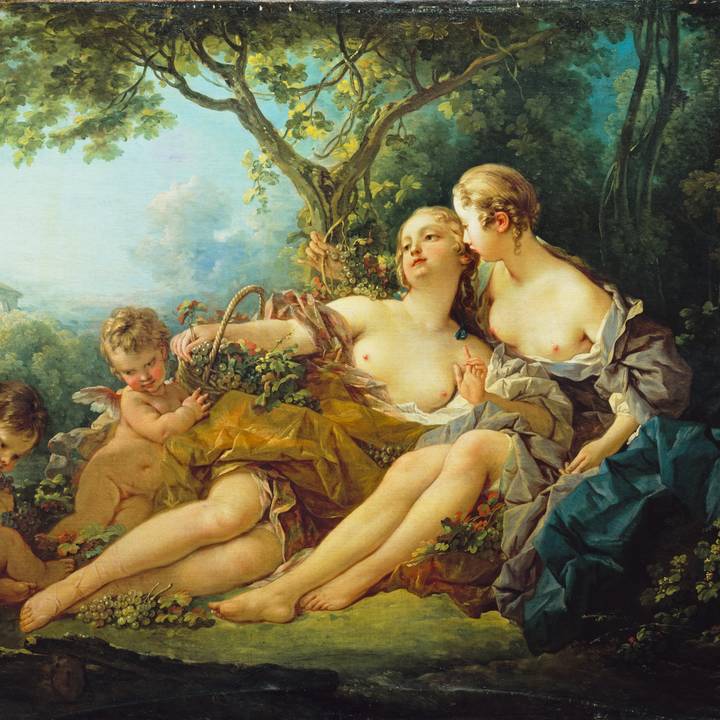Date: 176
Materials: Oil on canvas
Measurements: 76.6 x 63.6 cm, oval
Inv. No: P431
Francois Boucher (1703-1770) developed a successful niche in producing delicate, highly detailed pastoral cabinet paintings, such as Shepherd and Shepherdess Reposing.
In the eighteenth century, this piece first belonged to his friend Randon de Boisset (1708-1776), a major collector of the time with a keen interest in contemporary French art.
It was later acquired by the Marquis de Livois, another prominent collector from Angers. Notably, Boucher painted this composition for both male and female patrons, suggesting that his pastoral scenes were appreciated across gender lines and were not seen as exclusively "feminine" or "masculine."
This work exemplifies Boucher's smaller-scale pastorals and mythological scenes from the late 1750s to early 1760s, which stand out for their thicker paint application and fluid brushwork.
This technique can be seen in the lively, staccato brushstrokes depicting the flowers and foliage in the basket, and in the rich, textured treatment of the thick fleece of the drowsy goat.
Boucher’s evolving technique may have been influenced by his pupil Jean-Honoré Fragonard (1732-1806), who worked in Boucher’s studio in the early 1750s before formally entering the Academy in 1752.
Fragonard’s own pastoral works from this time, such as The Musical Contest, show Boucher’s influence so strongly that this piece was originally attributed to Boucher when acquired by the 4th Marquess of Hertford in 1842.
The close working relationship between Boucher and Fragonard in the early 1750s is also evident in a series of sketches made by Gabriel de Saint-Aubin (1724 – 1780) while viewing Randon de Boisset’s collection sale in 1777.
On the same page that he sketched the Wallace Collection’s Shepherd and Shepherdess Reposing with the annotation ‘pastorale very beautiful’, he also sketched four other pastoral subjects including Blind Man’s Buff and The Sea-Saw which are generally attributed to Fragonard, but engravings exist attributing the pictures to both.
Text adapted from Hedley, J., Francois Boucher: Seductive Visions, London, 2004.



